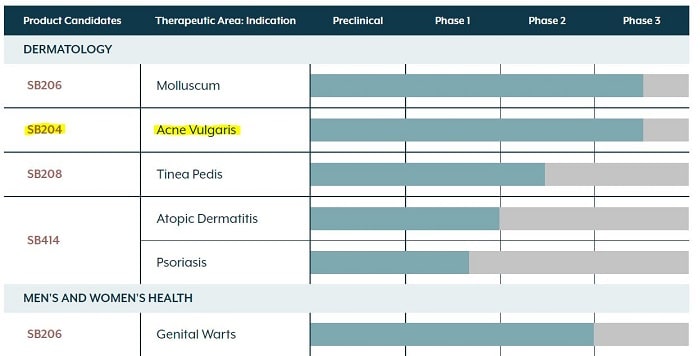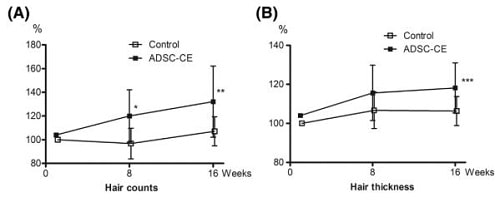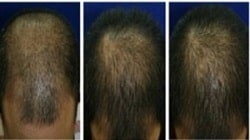Recently, reader “John Doe” brought to our attention a US-based biotechnology company named Novan. Their work in developing a topical nitric oxide based product for male pattern baldness (MPB) seems quite unique and is worth a post.
Novan, SB204, Acne and Hair Loss
Novan (sometimes also called Novan Therapeutics) is developing a number of dermatological products. Per its pipeline, their acne vulgaris product SB204 is already in stage 3 clinical trials. This is the same product that can also be used for hair loss.
However, unlike Cassiopea (Breezula for MPB and Winlevi for acne), Novan is not undertaking separate trials for its hair loss product. The company does list androgenetic alopecia as a potential therapeutic application of nitric oxide at the bottom of its pipeline page.
Perhaps the assumption is that if Novan’s topical nitric oxide (NO) based SB204 product for facial acne is proven safe, it can also be used on heads? And this can be done without necessitating FDA approval for such off-label use? In any event, who can prevent someone for getting a prescription for SB204 for acne, but then using it on their head instead?
Initially, I thought that Novan was a new company. However, it seems like they have been working on NO based drug candidate products since 2010.

Nitric Oxide and Hair Loss
Over the years, I have read about Sildenafil (Viagra) impacting nitric oxide pathways and temporarily curing erectile dysfunction. The vasodilatory effect from Sildenafil relaxes and widens blood vessels. I have also heard about nitric oxide’s important cardiovascular impact. In 1992, NO was voted as the molecule of the year.
However, I have not paid much attention to nitric oxide levels on the scalp and their impact on hair loss. One clinical trial in China that ended in 2013 compared the safety and efficacy of nitric oxide gel in promoting hair growth in men. No results were posted.
According to this excellent paper from Novan’s Dr. William Kelce, nitric oxide on the scalp or skin can inhibit skin steroidogenesis. This results in reduced levels of key androgens testosterone and dihydrotestosterone (DHT). Nitric oxide also reduces sebum levels.
Even more interesting than its anti-androgenic effects, nitric oxide levels can inhibit prostaglandin D2 (PGD2) synthesis. See my past posts on the connection between PGD2 and balding.
It has been postulated that one of the ways in which laser hair growth devices benefit scalp hair growth is via stimulating increased nitric oxide levels. Moreover, it is thought that Minoxidil has the chemical structure of nitric oxide and may be a nitric oxide agonist.

